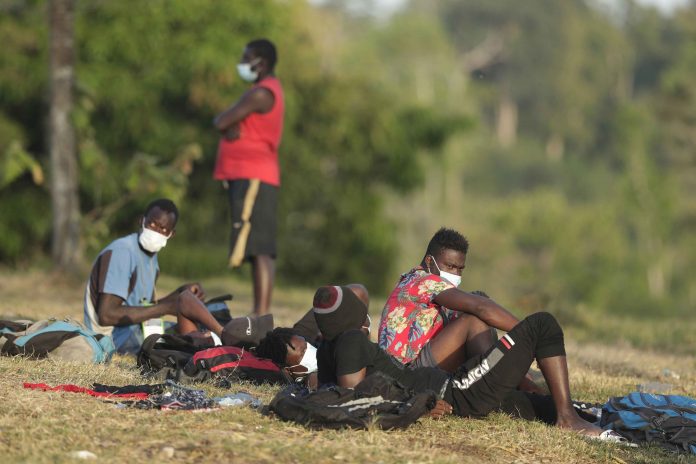
By JUAN ZAMORANO
Associated Press
SAN VICENTE, Panama (AP) — After nearly a year stalled in migrant camps at the edge of the jungle, hundreds of migrants have begun to move across Panama and into neighboring Costa Rica in recent weeks.
Panama closed its borders last March to try to slow the COVID-19 pandemic. Nearly 2,000 migrants suddenly found their years-long journey toward the United States suspended.
But on Jan. 29, Panama announced it was reopening its land borders, setting off a surge of migration through the dense jungle covering the Colombia-Panama border.
Paul Saenz, a 27-year-old electrician from Haiti, flew to Ecuador in December. He then took a bus to Colombia near the Panama border, joined other Haitian migrants and crossed the jungle into Panama in three days. He said he wanted to make it to the U.S. to help his family back in Haiti.
The new U.S. administration with a kinder tone toward immigrants gave him hope.
“I hope it goes well for us,” he said. “This president (Joe Biden) is better than the other who was a little harder.”
Ovidia Fernández, left Havana, Cuba two years ago with her daughter Anabel. They spent time in Guyana, Brazil, Peru, Ecuador and Colombia. They arrived in San Vicente on Sunday after walking through the jungle for 13 days.
“There could be a chance of entering the United States,” she said. “There are people who believe that with the change (of administration) there’s hope.”
José Bernal, local commissioner for Panama’s National Borders Service said the flow of migrants typically picks up during this time of year, when the rains pause. He said the pandemic restrictions sharply decreased the number of migrants who passed through last year to 8,000, down from 24,000 in 2019.
“The American dream continues driving people to move despite the pandemic,” Bernal said.
Idiam Osorio, a specialist with the U.N.’s International Organization for Migration in Panama, said the change of government in the U.S. was just one among a variety of factors spurring people to migrate. “We don’t dismiss that this issue (the new U.S. administration) is also connected to the growing motivation of migrants who have started to move, but the reasons are diverse, including economic (reasons),” she said.
Saenz and other recent arrivals stay at two migrant camps in Laja Blanca and San Vicente in the Darien area that borders Colombia. The first is made up of tents and portable toilets, while the second, which opened in late September, has small prefabricated buildings for the migrants.
Panama’s National Immigration Service said that since Jan. 29, some 551 migrants have left those camps and moved to Panama’s border with Costa Rica, something they previously had not been allowed to do during the pandemic.
The agency also says that only 168 migrants were currently in its camp in Los Planes, Chiriqui near that border, suggesting that the others had continued on into Costa Rica.
Officials said Tuesday that an estimated 1,000 migrants were in Darien, including 276 of whom arrived Monday night to small community of Bajo Chiquito, the first populated area migrants emerging from the jungle encounter. Immigration officials said they expect another 800 migrants to arrive from Colombia in the coming days.
Haitian Wisnel Olly, 41, had recently arrived with his wife and their 4-month-old twins. The twins were born in Chile where the family had lived for the past two years.
Unlike Saenz, Olly said it took his family two weeks to cross the Darien jungle. Their goal was to continue on as soon as possible with the goal of making it to Mexico “where we’ll be taken care of.”



















